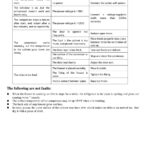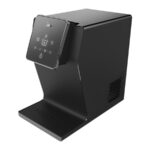
If your GE washer won’t drain or spin, you can try pressing the “Drain and Spin” option on the control panel to resolve the issue. Alternatively, you can check for a pinched or flattened drain hose that may be causing the problem.
Understanding The Issue
Have issues with your GE washer not draining or spinning? Check out these helpful videos on troubleshooting and fixing common problems, such as checking the lid switch, drain pump, motor capacitor, and drive belt. Find the solutions you need to get your washer back in working order.
When your GE washer refuses to drain or spin, it can be frustrating and inconvenient. However, understanding the issue is the first step in resolving the problem. Here are some common problems with a GE washer that may be causing the drain and spin issues, and why troubleshooting is important:
Common Problems With A Ge Washer:
- Clogged drain hose: A clogged drain hose can prevent water from draining out of the washer. This can lead to the washer not spinning properly or not spinning at all. When the drain hose is clogged, it’s important to identify and clear the blockage.
- Faulty lid switch: If the lid switch is malfunctioning, the washer may not drain or spin. The lid switch is a safety feature that prevents the washer from operating when the lid is open. Troubleshooting the lid switch can help determine if it needs to be repaired or replaced.
- Broken drain pump: The drain pump is responsible for removing water from the washer during the drain cycle. If the drain pump is broken or damaged, the washer won’t be able to drain and spin properly. Troubleshooting the drain pump can help identify any issues and determine if it needs to be repaired or replaced.
- Malfunctioning motor drive belt: The motor drive belt is what enables the washer drum to spin. If the belt is broken, loose, or worn out, the washer may not be able to spin. Troubleshooting the motor drive belt can help determine if it needs to be tightened, replaced, or repaired.
Importance of Troubleshooting the Issue:
- Avoid costly repairs: By troubleshooting the issue yourself, you may be able to identify and resolve the problem without the need for costly repairs or professional help.
- Save time and frustration: When your washer isn’t draining or spinning, it can disrupt your daily routine. Troubleshooting the issue can help you get your washer back up and running quickly, saving you time and frustration.
- Extend the lifespan of your washer: Regular troubleshooting and maintenance can help extend the lifespan of your washer by identifying and addressing any issues before they worsen. This can save you money in the long run by avoiding the need for a new washer.
Remember, troubleshooting your GE washer when it won’t drain or spin is essential in resolving the issue effectively. By understanding the common problems and their importance, you can take the necessary steps to get your washer back in working order.
Checking For Obstructions
If your GE washer won’t drain or spin, it’s important to check for obstructions. Blocked drain pumps or outlet pipes are common causes of this issue.
Identifying and Removing Clogs in the Drainage System
- Check the drain hose and inspect it for any kinks or obstructions.
- Ensure that the drain hose is inserted properly into the drainpipe or utility sink.
- Use a flashlight to look into the drain and check for any visible debris or objects that may be blocking the water flow.
- Remove any visible clogs, such as lint, hair, or small objects, by hand or using a pair of pliers.
- If there are no visible clogs, detach the drain hose from the washer and inspect it for any obstructions.
- Clean the drain hose by running water through it or using a long brush to dislodge any debris.
- Reattach the drain hose and check if the washer can now drain properly.
- If the problem persists, move on to the next step.
Cleaning the Pump Filter:
- Locate the pump filter, which is usually located at the front or back of the washer.
- Place a towel or container underneath the filter to catch any water or debris.
- Unscrew the filter cap or cover and carefully remove the filter.
- Clean the filter by rinsing it under running water or wiping it with a cloth.
- Inspect the filter for any clogs or debris that may be causing the issue.
- Remove any obstructions from the filter using your fingers or a small brush.
- Once the filter is clean, reinstall it securely and tighten the cap or cover.
- Run a test cycle to check if the washer is now draining and spinning properly.
- If the problem still persists, it’s recommended to contact a professional technician for further assistance.
Remember to always unplug the washer before performing any troubleshooting or maintenance tasks. By following these steps, you’ll be able to identify and remove any obstructions that may be preventing your GE washer from draining or spinning properly.
Inspecting The Drain Pump
Inspecting the drain pump is crucial when your GE washer won’t drain or spin. This step-by-step guide shows you how to remove, check, and reinstall the drain pump to fix the issue effectively.
The drain pump is essential for removing water from your GE washer during the drain cycle. If your washer won’t drain or spin, it’s important to inspect the drain pump to determine if it’s functioning properly. Here are the steps to test the functionality of the drain pump:
- Check for clogs: Inspect the drain pump for any debris or foreign objects that may be blocking the pump. Clear out any obstructions that you find.
- Test the pump motor: Use a multimeter to test the drain pump motor for continuity. If there is no continuity, it indicates a faulty motor that needs to be replaced.
- Inspect the impeller: The impeller inside the drain pump can become clogged or damaged, causing the pump to malfunction. Check the impeller for any blockages or signs of wear and tear.
- Check the pump housing. The pump housing should be free from cracks or leaks. If you notice any damage, it’s a sign that the pump needs to be replaced.
- Examine the drain hose: Inspect the drain hose that connects to the pump for any kinks or blocks. Straighten out the hose if necessary to ensure proper drainage.
Testing the Functionality of the Drain Pump:
To determine if the drain pump is the cause of your washer’s drainage and spinning issues, follow these steps:
- Access the drain pump: Locate the drain pump at the bottom of the washer. Depending on your model, you may need to remove the front or rear panel to gain access to the pump.
- Disconnect the power. Before performing any tests or repairs, unplug the washer from the power source to avoid any electrical accidents.
- Disconnect the pump: Remove any hoses or wires connected to the pump to detach it from the washer.
- Test the pump motor: Using a multimeter set to the ohms setting, check for continuity between the terminals on the pump motor. If there is no continuity, it indicates a faulty motor that needs to be replaced.
- Check the impeller. Inspect the impeller for any blockages or damage. Clear out any debris or replace the impeller if necessary.
- Inspect the pump housing: Check the pump housing for any cracks or leaks. If there is any damage, it’s a sign that the pump needs to be replaced.
- Reinstall the pump. Once you’ve inspected and tested the pump, reconnect it to the washer by reattaching any hoses or wires that were disconnected.
- Reconnect the power: Plug the washer back into the power source and run a test cycle to see if the drain pump is now functioning properly.
Steps to replace a faulty drain pump:
If you’ve determined that the drain pump is indeed faulty and needs to be replaced, follow these steps:
- Order a replacement drain pump. Use the model number of your GE washer to find the correct replacement drain pump. You can order the part online or purchase it from a local appliance store.
- Disconnect the power: Unplug the washer from the power source to ensure your safety while performing the replacement.
- Remove the old pump. Locate the drain pump and remove any hoses or wires connected to it. Take note of how the pump is secured in place (screws, clips, etc.) And carefully remove it.
- Install the new pump: Position the new drain pump in the same location where the old one was removed. Secure it in place using the same method used to secure the old pump.
- Reconnect hoses and wires: Reattach any hoses or wires that were disconnected from the old pump to the new drain pump.
- Reconnect the power: Plug the washer back into the power source and run a test cycle to ensure that the new drain pump is working correctly.
By inspecting and testing the functionality of the drain pump, you can diagnose the cause of your GE washer’s draining and spinning issues. If the drain pump is found to be faulty, following the steps to replace it will help restore your washer’s performance.
Examining The Lid Switch
Examining the lid switch is crucial when your GE washer won’t drain or spin. Learn how to troubleshoot and fix this issue in just a few simple steps.
Checking If The Lid Switch Is The Cause Of The Problem:
- The lid switch is responsible for detecting whether the washer lid is closed during the spin and drain cycles. If the lid switch is defective or not functioning properly, it can prevent the washer from draining or spinning.
- To check if the lid switch is the cause of the problem, follow these steps:
- Open the washer lid and locate the lid switch, usually located near the door hinge.
- Inspect the lid switch for any visible damage, such as a broken or loose connection.
- Use a multimeter to test the continuity of the lid switch. If there is no continuity when the lid is closed, it indicates a defective lid switch.
- Additionally, check if the actuator of the lid switch is properly engaging when the lid is closed. If the actuator is not engaging, it may need adjustment or replacement.
How To Troubleshoot And Replace A Defective Lid Switch:
- Troubleshooting a defective lid switch involves several steps to ensure proper diagnosis and replacement if necessary. Here’s what you need to do:
- Unplug the washer from the power source before starting any troubleshooting or replacement procedures.
- Remove the control panel to gain access to the lid switch. Refer to the washer’s manual or online resources for specific instructions on panel removal.
- Once the control panel is removed, locate the lid switch and disconnect the wiring harnesses connected to it.
- Use a multimeter to test the continuity of the lid switch. If there is no continuity, it indicates a defective switch, and replacement is necessary.
- To replace the lid switch, carefully remove the old switch from its mounting and disconnect any remaining wires or connectors.
- Install the new lid switch by reconnecting the wires and mounting it in place.
- Reassemble the control panel and plug the washer back into the power source.
- Test the washer by running a cycle to ensure that the lid switch replacement resolved the problem of not draining or spinning.
Remember, if you are unsure about any step or lack the necessary skills, it is always advisable to seek professional help or consult with the manufacturer’s customer support for guidance.
Assessing The Motor Capacitor
Have trouble with your GE washer not draining or spinning? Before calling a professional, you can try assessing the motor capacitor. This simple troubleshooting step might help you fix the issue and save some money on repairs.
Understanding The Role Of The Motor Capacitor
The motor capacitor is a crucial component of your GE washer that helps facilitate the start-up and running of the motor. It stores electrical energy and provides the necessary boost to get the motor up and running. If the motor capacitor is faulty, it can lead to issues such as the washer not draining or spinning properly.
Steps To Measure And Replace A Faulty Capacitor
- Unplug your GE washer: Before you start any repairs, ensure that your washer is unplugged from the power source to avoid any accidents or electric shocks.
- Locate the motor capacitor: The motor capacitor is typically located near the motor and can be identified by its cylindrical shape. Refer to your washer’s manual or the manufacturer’s website for specific instructions on locating the capacitor.
- Discharge the capacitor: Capacitors store electrical energy even when the appliance is unplugged. To discharge the capacitor, place a screwdriver with an insulated handle across its terminals to prevent any electrical shocks.
- Test the capacitor: Use a multimeter set to the capacitance setting to measure the capacitor’s readings. If the meter displays a reading close to zero or significantly lower than the rated value, it indicates a faulty capacitor that needs replacement.
- Purchase a new capacitor: Once you have confirmed that the capacitor is faulty, you will need to purchase a replacement. Be sure to buy a compatible capacitor with the same capacitance value and voltage rating as the original one.
- Install the new capacitor: Disconnect the wires from the old capacitor and connect them to the corresponding terminals on the new capacitor. Ensure a secure connection and use electrical tape or zip ties to secure the wires in place.
- Reassemble the washer: After successfully replacing the motor capacitor, reassemble any parts or components that were removed during the process, such as the washer top or console.
- Test the washer: Plug in the washer and test if the issue of not draining or spinning has been resolved. If the problem persists, you may need to consult a professional or consider other potential causes.
Remember to exercise caution and prioritize safety throughout the process of assessing and replacing the motor capacitor. If you’re unsure or uncomfortable with performing these steps yourself, it’s always best to seek the assistance of a qualified technician.
Verifying The Motor Drive Belt
Is your GE washer not draining or spinning? Learn how to verify the motor drive belt to troubleshoot and fix the issue. Remove the washer belt, check its condition and tension, and test with a new belt if necessary. Get your washer back up and running efficiently with these simple steps.
The motor drive belt plays a crucial role in the functioning of your GE washer. If the washer won’t drain or spin, one possible cause could be a worn-out or damaged motor drive belt. Here’s how you can verify and address this issue:
Checking The Condition And Tension Of The Drive Belt:
- Start by unplugging your washer and ensuring it is turned off for safety.
- Locate the access panel at the back of your washer or under the machine’s top, depending on the model.
- Remove the access panel carefully to expose the motor drive belt.
- Inspect the drive belt for any signs of wear, such as cracks, fraying, or stretching. A damaged belt will require replacement.
- Check the tension of the drive belt by pressing it down with your finger. It should feel firm and not too loose or too tight. If the belt is loose, it may need adjustment or replacement.
- Look for any debris or objects that may have gotten tangled in the belt. Clearing any obstructions may solve the draining or spinning issue.
Replacing A Worn-Out Or Damaged Motor Drive Belt:
- Refer to your GE washer’s manual for specific instructions on belt replacement. Ensure you have the correct replacement belt for your model.
- Unplug the washer and turn it off before beginning any repair work.
- Locate the drive belt and identify how it is attached to the motor and tub pulleys.
- Use a wrench or socket set to loosen the bolts or screws securing the drive belt.
- Carefully remove the old belt from the motor and tub pulleys.
- Install the new drive belt by positioning it around the motor and tub pulleys according to the diagram in your washer’s manual.
- Tighten the bolts or screws to secure the new belt in place.
- Double-check the tension of the new belt to ensure it is neither too loose nor too tight.
- Reinstall the access panel, plug in the washer, and test to see if the draining and spinning issues are resolved.
By verifying the condition and tension of the motor drive belt and replacing it if necessary, you can address potential causes for your GE washer not draining or spinning properly. Remember to always prioritize your safety by unplugging the washer and following the manufacturer’s instructions.
Resetting The Washer
Have trouble with your GE washer not draining or spinning? Get step-by-step instructions on how to reset your washer and fix the issue, ensuring your clothes are clean and dry every time. Watch helpful videos and learn from experts in appliance repair to troubleshoot and resolve the problem quickly.
How To Reset A Ge Washer To Resolve Minor Issues:
- Unplug the washer from the power source.
- Wait for about one minute to allow the washer to completely power down.
- Plug the washer back into the power source.
- Press the “Power” button to turn the washer on.
- Select a wash cycle and press the “Start” button.
Steps To Perform A Hard Reset For More Severe Problems:
- Unplug the washer from the power source.
- Open the washer’s door or lid to access the control panel.
- Locate the reset button on the control panel and press it for at least three seconds.
- Close the washer’s door or lid and plug it back into the power source.
- Press the “Power” button to turn the washer on.
- Select a wash cycle and press the “Start” button.
Performing a reset on your GE washer can often resolve minor issues and reset the machine’s sensors. If you’re experiencing more severe problems with your washer, performing a hard reset can help. Make sure to follow the specific steps mentioned above to reset your GE washer effectively.
Seeking Professional Help
Have trouble with your GE washer not draining or spinning? Seek professional help in Austin, Texas to get your washer back in working order. Avoid the hassle and let the experts handle the issue for you.
When it comes to troubleshooting complex issues with your GE washer that won’t drain or spin, there may come a time when you need to consider contacting a professional technician. While some problems can be easily resolved with basic troubleshooting steps, such as checking the drain hose or cleaning the pump filter, there are certain situations where professional help is essential.
Here are some instances when hiring a reliable repair service is recommended:
- Persistent draining or spinning issues: If you have repeatedly tried troubleshooting methods, but your GE washer still won’t drain or spin properly, it’s time to seek professional help. This could indicate a more serious underlying problem that requires the expertise of a technician.
- Electrical or mechanical faults: If you suspect that there is an electrical or mechanical issue causing the drainage or spinning problem, it is best to call in a professional. Attempting to fix these types of problems without proper knowledge and experience can lead to further damage and safety hazards.
- Warranty coverage: If your GE washer is still under warranty, it’s important to contact the manufacturer or an authorized repair service. Attempting DIY repairs may void the warranty, so it’s best to leave it in the hands of professionals.
- Lack of experience or tools: If you don’t have experience working with appliances or lack the necessary tools for repair, it is advisable to hire a professional technician. They have the expertise, tools, and resources to diagnose and fix the problem efficiently.
- Time constraints: If you don’t have the time or patience to troubleshoot and fix the issue yourself, it’s worth investing in a professional service. This way, you can avoid the frustration of dealing with a malfunctioning washer and have the problem resolved quickly and effectively.
Remember, trying to fix complex issues without the proper knowledge and skills can potentially do more harm than good. By hiring a professional repair service, you can ensure that your GE washer is in capable hands and that the problem will be addressed correctly.
So, when you find yourself facing persistent draining or spinning issues, electrical or mechanical faults, warranty coverage concerns, lack of experience or tools, or time constraints, it’s time to consider seeking professional help. Don’t hesitate to contact a reliable repair service to get your GE washer back in working condition.
Preventive Maintenance Tips
Have trouble with your GE washer not draining or spinning? Check out these helpful preventive maintenance tips to fix the issue and ensure your clothes come out clean and dry every time. From checking the drain pump to testing the motor drive belt, these tips will help you troubleshoot and fix the problem quickly.
Ge Washer Won’t Drain or Spin:
If you’re tired of dealing with a GE washer that won’t drain or spin, it’s time to take preventive measures. By following these simple steps and regular cleaning and maintenance recommendations, you can ensure that your washer functions smoothly and avoid future drainage and spinning problems.
Steps To Prevent Future Drainage And Spinning Problems:
- Check the drain hose: Ensure that the drain hose is properly connected and free of any clogs or kinks. A blocked or incorrectly installed drain hose can prevent water from draining and cause spinning issues.
- Clean the filter: Regularly clean the washer’s filter to remove any debris or lint that may be obstructing the drainage system. Refer to the manufacturer’s instructions for the location and procedure of cleaning the filter.
- Don’t overload the washer: Overloading the washer can put excessive strain on the motor and prevent proper drainage and spinning. Follow the recommended loading capacity mentioned in the user manual.
- Avoid using excessive detergent: Using too much detergent can lead to excess soap residue, which can clog the drain pump and hinder proper drainage. Use the recommended amount of detergent for each load.
- Keep the washer clean: Regularly wipe down the washer’s interior, including the drum and door seal, to remove any dirt or grime buildup. This helps maintain proper drainage and prevents odors.
Regular Cleaning And Maintenance Recommendations:
- Run a monthly cleaning cycle: Fill the washer with hot water and add a cup of white vinegar or a washing machine cleaner. Let the machine run a complete cycle to remove any buildup and keep the washer clean.
- Inspect the hoses: Check the hoses for any leaks, cracks, or bulges. Replace them if necessary to prevent water leaks and ensure proper drainage.
- Level the washer: Make sure the washer is properly leveled to prevent excessive movement during the spin cycle, which can affect drainage. Adjust the leveling feet as needed.
- Clean the dispenser drawer: Remove the detergent dispenser drawer and clean it thoroughly to prevent detergent residue buildup, which can interfere with proper drainage.
- Schedule professional maintenance: Consider scheduling regular maintenance by a qualified technician to inspect and service your washer. They can identify any potential issues and perform necessary repairs or replacements.
By following these preventive maintenance tips, you can keep your GE washer in optimal condition and avoid drainage and spinning problems in the future. Remember to consult the user manual and seek professional help if you encounter any complex issues.
Happy washing!
Frequently Asked Questions
How Do I Force My Ge Washer To Drain?
To force your GE washer to drain, follow these steps: 1. If the washer is running, press the “Start/Pause” pad once to interrupt the cycle. 2. Select “Drain and Spin” and press the “Start/Pause” pad again. 3. If the washer is still full of water and the “Stop” pad has been selected, select “Drain and Spin” and then press “Start.
” 4. If the drain hose is pinched or flattened, check for any obstructions and ensure it is properly connected. 5. If the problem persists, check for loose wires and consider troubleshooting or contacting a professional for assistance.
Why Is My Washing Machine Not Emptying Or Spinning?
One reason for a washing machine not emptying or spinning is a blocked drain pump, preventing water flow.
How Do You Drain A Ge Washer That Won’t Drain?
To drain a GE washer that won’t drain, interrupt the cycle by pressing the “Start/Pause” pad once. Then select “Drain and Spin” and press “Start/Pause” again. If the washer is still full of water, select “Drain and Spin” and then press “Start”.
How Do You Reset A Ge Washer That Won’t Spin?
To reset a GE washer that won’t spin, interrupt the cycle by pressing the “Start/Pause” pad once, then select “Drain and Spin” and press “Start/Pause” again. If the washer is still full of water, select “Drain and Spin” and press “Start”.
Why Is My Ge Washer Not Draining Or Spinning Properly?
The most common reason for this issue is a blocked drain pump or outlet pipe, preventing proper water flow.
Conclusion
If your GE washer won’t drain or spin, there are a few steps you can take to troubleshoot the issue. First, check for any loose wires that may be causing a connection problem. Next, inspect the drain pump and hose for any clogs or blockages that may be preventing water from draining properly.
If the drain pump or hose is clogged, you can try cleaning them to see if that resolves the issue. If the problem persists, it may be necessary to replace the drain pump or hose. Additionally, check the lid switch and motor capacitor to ensure they are functioning correctly.
By following these troubleshooting steps, you can hopefully get your GE washer back up and running efficiently. Remember to always consult the manufacturer’s instructions or seek professional assistance if necessary.




